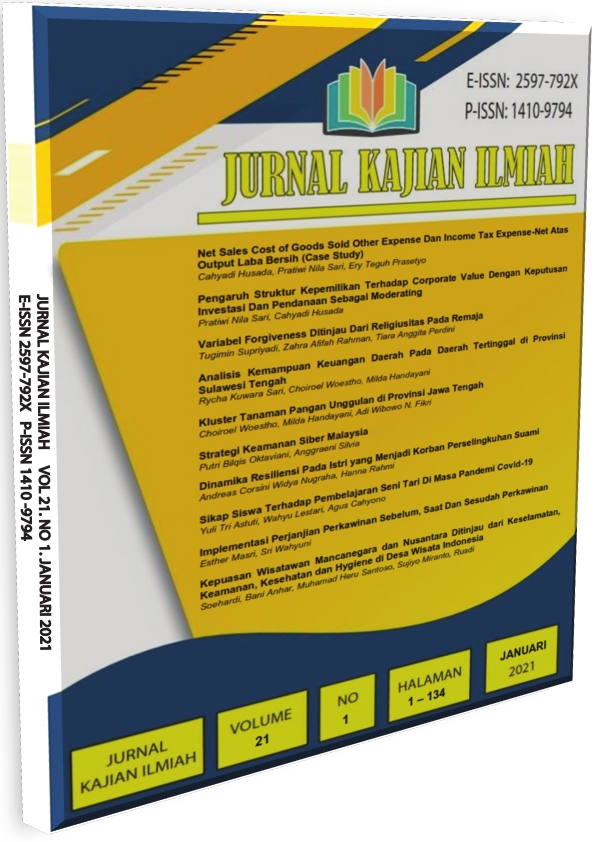Implementasi Deep Learning Untuk Rekomendasi Aplikasi E-learning Yang Tepat Untuk Pembelajaran jarak jauh
DOI:
https://doi.org/10.31599/jki.v21i3.521Keywords:
E-learning, online teaching, Deep Learning, Artificial Neural Network, PythonAbstract
The purpose of this study is to recommend e-learning applications that are appropriate for use in online learning in college environments. The large number of e-learning platforms used by lecturers for online lecture activities results in students being forced to use several e-learning applications depending on the lecturer who teaches the courses taken, for the university also finally gives lecturers policies for distance learning reports each finished giving the material. In this study the data collection method began by taking data from the faculty to find out which e-learning applications were widely used by lecturers, then distributing questionnaires to students and lecturers who used the e-learning application to measure the e-leaning application with the e-learning criteria. Appropriate. The data is then processed into a dataset. The algorithm used in implementing deep learning is Artificial Neural Network (ANN). For the implementation of ANN, 27 variables were determined from the e-learning criteria and 1 target. In this ANN stage, prediction was used with classifications based on preparation, training, learning, evaluation and prediction using the python programming. The results obtained in this study that the Moodle application gets the highest score with an accuracy of 97% to be used as a recommendation for e-learning applications that are appropriate for universities to conduct online lectures.
Downloads
References
Anstey, L. M., & Watson, G. P. L. (2018). A Rubric for Evaluating E-Learning Tools in Higher Education.
Baidawi, T., & Sandi, M. (2013). Desktop Computing Dengan Metode Eyeos. Seminar Nasional Inovasi Dan Teknologi (SNIT) 2013 IMPLEMENTASI, (May), A-221.
Bühler, C., & Fisseler, B. (2007). Accessible E-Learning and Educational Technology - Extending Learning Opportunities for People with Disabilities. Conference ICL2007, September 26 -28, 2007, (August 2014), 11 pages. Retrieved from https://hal.archives-ouvertes.fr/hal-00257138/
Chauhan, K., & Ram, S. (2018). Image Classification with Deep Learning and Comparison between Different Convolutional Neural Network Structures using Tensorflow and Keras. International Journal of Advance Engineering and Research Development, 5(02), 533–538.
Chen, Y., & He, W. (2013). Security risks and protection in online learning: A survey. International Review of Research in Open and Distance Learning, 14(5), 108–127. https://doi.org/10.19173/irrodl.v14i5.1632
Chou, T.-C. R. (2014). A Scale of University Students’ Attitudes toward e-Learning on the Moodle System. International Journal of Online Pedagogy and Course Design, 4(3), 49–65. https://doi.org/10.4018/ijopcd.2014070104
Dodun, O., Panaite, E., Seghedin, N., Nagîţ, G., Duşa, P., Neştian, G., & Slətineanu, L. (2015). Analysis of an E-learning Platform use by Means of the Axiomatic Design. Procedia CIRP, 34, 244–249. https://doi.org/10.1016/j.procir.2015.07.059
Fakhfakh, R., Ben, A., & Ben, C. (2017). Deep Learning-Based Recommendation: Current Issues and Challenges. International Journal of Advanced Computer Science and Applications, 8(12). https://doi.org/10.14569/ijacsa.2017.081209
Gregory, S., & Bannister-Tyrrell, M. (2017). Digital learner presence and online teaching tools: higher cognitive requirements of online learners for effective learning. Research and Practice in Technology Enhanced Learning, 12(1). https://doi.org/10.1186/s41039-017-0059-3
Kisworo, M. W. (2016). Implementing open source platform for education quality enhancement in primary education: Indonesia experience. Turkish Online Journal of Educational Technology, 2016(july), 295–301.
Kumar Basak, S., Wotto, M., & Bélanger, P. (2018). E-learning, M-learning and D-learning: Conceptual definition and comparative analysis. E-Learning and Digital Media, 15(4), 191–216. https://doi.org/10.1177/2042753018785180
Lee, S. M. (2014). The relationships between higher order thinking skills, cognitive density, and social presence in online learning. Internet and Higher Education, 21, 41–52. https://doi.org/10.1016/j.iheduc.2013.12.002
Liu, J., & WU, C. (2017). Deep Learning Based Recommendation: A Survey. Lecture Notes in Electrical Engineering, 2(March 2017), 467–475. https://doi.org/10.1007/978-981-10-4154-9
Maeda, M., & Ono, Y. (2019). Diffusion of lesson study as an educational innovation. International Journal of Comparative Education and Development, 21(1), 46–60. https://doi.org/10.1108/IJCED-10-2018-0044
Moubayed, A., Injadat, M., Nassif, A. B., Lutfiyya, H., & Shami, A. (2018). E-Learning: Challenges and Research Opportunities Using Machine Learning Data Analytics. IEEE Access, 6, 39117–39138. https://doi.org/10.1109/ACCESS.2018.2851790
Muniasamy, A., & Alasiry, A. (2020). Deep learning: The impact on future eLearning. International Journal of Emerging Technologies in Learning, 15(1), 188–199. https://doi.org/10.3991/IJET.V15I01.11435
Nawaz, A., & Zubair Khan, M. (2012). Issues of Technical Support for e-Learning Systems in Higher Education Institutions. International Journal of Modern Education and Computer Science, 4(2), 38–44. https://doi.org/10.5815/ijmecs.2012.02.06
Phipps, L., & Kelly, B. (2006). Holistic approaches to e-learning accessibility. Alt-J, 14(1), 69–78. https://doi.org/10.1080/09687760500479860
Prof. Indira, D., & MS. Sakhi. (2017). Online learning. International Education & Research Journal [IERJ], 3(8), 32–34. https://doi.org/10.4324/9780429355097-7
Rapanta, C., Botturi, L., Goodyear, P., Guàrdia, L., & Koole, M. (2020). Online University Teaching During and After the Covid-19 Crisis: Refocusing Teacher Presence and Learning Activity. Postdigital Science and Education, 2(3), 923–945. https://doi.org/10.1007/s42438-020-00155-y
Raschka, S. (2015). Python Machine Learning. Birmingham: Packt Publishing Limited.
Reza, R. (2017). Penerapan Jaringan Saraf Tiruan Jenis Deep Learning Untuk Sistem Informasi Kesehatan Jembatan. Universitas Bina Nusantara.
Richardson, J. C., Koehler, A. A., Besser, E. D., Caskurlu, S., Lim, J. E., & Mueller, C. M. (2015). Conceptualizing and investigating instructor presence in online learning environments. International Review of Research in Open and Distance Learning, 16(3), 256–297. https://doi.org/10.19173/irrodl.v16i3.2123
Shiddieqy, H. A., Hariadi, F. I., & Adiono, T. (2017). Implementation of deep-learning based image classification on single board computer. 2017 International Symposium on Electronics and Smart Devices, ISESD 2017, 2018-Janua, 133–137. https://doi.org/10.1109/ISESD.2017.8253319











_-_Copy1.jpg)




